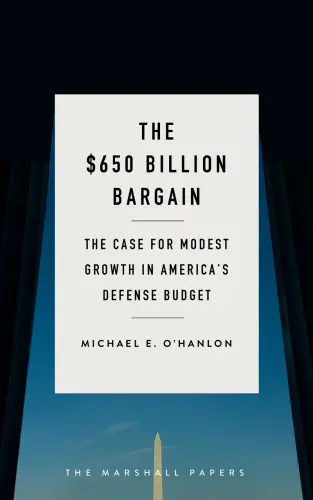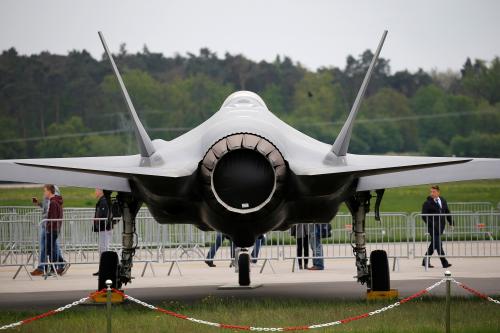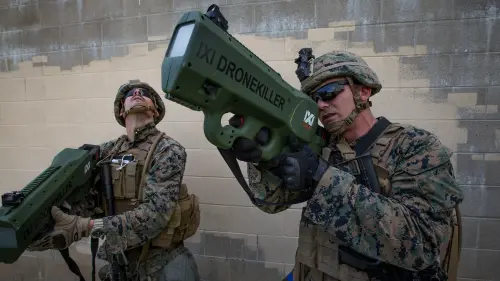At the annual Air Force Association national meeting in Washington this week, Secretary of the Air Force Heather Wilson outlined a plan that would lead to a nearly 25 percent growth in the Air Force’s main force structure. Because support capabilities and infrastructure would not increase quite so much, the net increase in the size and presumably the budget of the entire U.S. Air Force would be more like 15 percent. But in dollar terms, that would still be real money, with $25 billion or more added to the annual budget.
Wilson’s plan, developed with Air Force Chief of Staff David Goldfein, is a worthy contribution to the nation’s intellectual debate on defense planning. Specifically, by following the overall guidance of President Donald Trump and Secretary of Defense Jim Mattis as developed in the 2017 National Security Strategy and 2018 National Defense Strategy, it prioritizes preparation for (and thus, deterrence of) great-power war. That central objective replaces the longstanding two-regional-war construct that has guided post-Cold War American defense policy for more than a quarter of a century. Contingencies centered on China or Russia, more than Iran or Syria or North Korea or Afghanistan, would move to the fore.
And making sure that the United States, with regional allies, could prevail in one such big war at a time turns out, unsurprisingly, to be considerably more difficult than trying to defeat two smaller regional powers at once. Moreover, if one is building a force to win a single war, it is necessary to have a substantial margin of insurance in case things go badly—since there is no package of forces for a second possible war to draw upon as backup. China and Russia also have the capabilities to interrupt American force deployments and operations through cyber, anti-satellite, nuclear, and other targeted attacks that most lesser powers do not. All these factors make it possible to understand why a serious Air Force analysis would recommend a force structure almost as large as that of the Cold War—386 operational squadrons, as opposed to 401 in the 1980s, and 312 today (squadrons have up to 24 aircraft, depending on type).
Concerns about survivability of key forward land bases, satellites, and communications infrastructure also means that the Air Force is right to place primary emphasis on assets such as bombers, tankers, and command/control/communications/intelligence systems. These are the kinds of technologies that would enjoy the greatest proportionate increase in funding and force structure going forward—after receiving some of the least prioritization in recent decades.
All that said, I would still offer three caveats about Wilson and Goldfein’s new plan. They do not invalidate its logic in any way, but they need to be added to the mix of considerations shaping future American defense policy.
1The deficit. At some point, we need to rebalance our national security debate and again acknowledge that our country’s fiscal and financial health matter to long-term national security. The Chairman of the Joint Chiefs of Staff, General Joseph Dunford, said as much at a Brookings panel in February 2017. But deficit hawks have otherwise largely disappeared from the debate, it would seem, only seven or eight short years after the GOP’s Tea Party movement forced a major scaling back of the Obama defense budget. With funding of $716 billion expected in 2019, the annual U.S. national security budget is some $150 billion above the Cold War average and $100 billion above the Reagan-era peak. To be sure, this budget represents only a relatively modest 3.5 percent or so of GDP, much less than the Cold War average by that metric. And it funds a force only two-thirds the size of 1980s levels. Finally, we could not balance a federal deficit of nearly $1 trillion a year on the Pentagon’s back, even if we wanted to. But deficits of this size deprive the nation of funds for investments in science, infrastructure, and education relevant to future national power, while reducing policymakers’ flexibility in the event of a national emergency.
With funding of $716 billion expected in 2019, the annual U.S. national security budget is some $150 billion above the Cold War average and $100 billion above the Reagan-era peak.
2The scenarios. We do not really know, at the unclassified level, which scenarios drove the Air Force calculations and resulting force requirements. For example, did they assume the need to decisively defeat an attempted Chinese blockade of Taiwan, or a PLA invasion of the Korean peninsula in the event of war between North and South Korea that brought in the United States and then China as well? Some scenarios are clearly more likely, and compelling, than others. Some are also more important to be able to win decisively, because there could be conflicts in which the smarter American role would be to apply sanctions and asymmetric military force rather than to fight with massive forces at the initial point of enemy attack. Absent more information, we cannot know how to evaluate the Air Force’s calculations.
3Military uncertainties. Even when scenarios are specified, details do not follow automatically. And uncertainties abound. Will China or Russia use a few tactical nuclear weapons against our forward bases near their territories, hoping that we might not respond in kind? Will they manage to shut down such bases otherwise, through special forces raids or cyberattacks, for example? Will they cut our undersea fiber-optic communications cables while also taking down key satellites used in reconnaissance and communications and targeting? Even with the best classified data, even with brilliant military analysts on their staffs, Secretary Wilson and General Goldfein cannot really know the answers to these questions. Bear in mind that official predictions of U.S. casualties in the last two Iraq wars were each off by roughly an order of magnitude—calculations were an order of magnitude too pessimistic in Operation Desert Storm in 1991, then perhaps just as far off in the other direction in the war that began in 2003. Modeling combat is an inherently imprecise endeavor, just as war itself is unpredictable and imprecise. Yes, this consideration tends to back up Wilson and Goldfein’s argument that we need a substantial buildup, in order to have an adequate margin of safety against sophisticated foes. But any calculation smacking of great precision is claiming a degree of clairvoyance that it cannot really have. The most important goal, of course, is deterrence of a Russian or Chinese action that would lead to war. Yet here too, there is uncertainty about what planners and politicians in Moscow and Beijing really think. Chances are that they are deterred even now (though I agree with the Air Force’s desire to buttress deterrence at this fraught moment in history).
For all these reasons, I will study the Air Force analyses with great interest. And I already have a professional admiration for the quality of the work that went into them. But the new set of goals should not be viewed as a binding budget plan, or definitive “requirement” (to coin a favorite, if badly misleading, Pentagon phrase). Better to think of it, rather, as one contribution to an ongoing debate—that is, as the “vision” that it professes to be, no more and no less.
The Brookings Institution is committed to quality, independence, and impact.
We are supported by a diverse array of funders. In line with our values and policies, each Brookings publication represents the sole views of its author(s).








Commentary
What we can learn from—and add to—the new Air Force vision
September 17, 2018